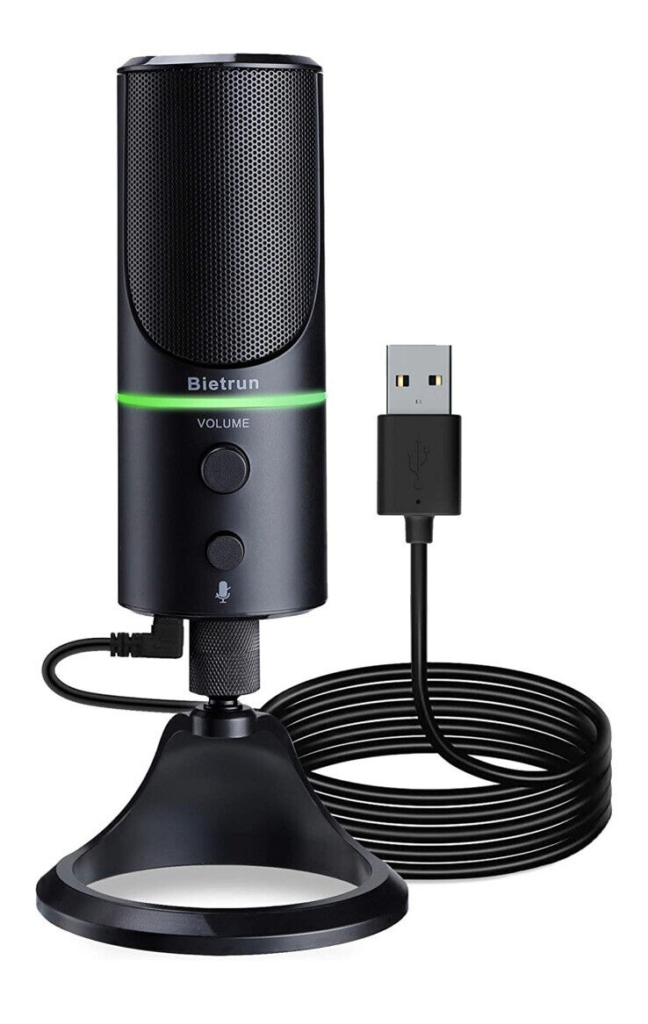Wireless technology has revolutionized how we communicate and interact with the world, extending its influence to various aspects of our lives, including audio equipment. Among the innovative devices in this domain, wireless microphones are essential tools, transforming how we capture and amplify sound. In this article, we delve into the intricacies of wireless microphone connectivity, exploring the technology that underpins it, its significance in diverse settings, and providing practical insights for users and enthusiasts.
Wireless Microphones
Wireless microphones are audio devices that liberate speakers, performers, and presenters from the constraints of traditional wired setups. Unlike their wired counterparts, these microphones employ advanced radio frequency (RF), infrared (IR), or Bluetooth technology to transmit audio signals without needing physical cables. This freedom of movement has redefined the possibilities for public speakers, musicians, educators, and professionals, allowing them to engage with their audience dynamically and interactively.
History of wireless Connectivity
The history of wireless connectivity is long and interesting. Wireless communication has existed since the 1600s when scientists and inventors began trying different ways to send information without wires. Wireless communication technology made much progress with the invention of the telegraph and the radio in the late 19th and early 20th centuries.
In the 1980s, the first mobile phones and cellular networks came out. This was the start of the modern era of wireless connectivity. The first cell phone networks used analog technology, which digital technology eventually replaced in the 1990s. This change made it possible for people to use their mobile devices to send text messages, get on the internet, and make phone calls.
Over the past few decades, wireless technology has changed and become better. Wi-Fi, Bluetooth, and 5G are all examples of wireless technologies that are used today. These technologies connect things and make it possible to do many different things.
What does wireless connectivity mean?
Wireless communication lets devices interact and access the internet without a cable or wire. It has transformed communication and information access. Cellular networks, Wi-Fi, and Bluetooth enable wireless connectivity. These technologies transmit and receive data utilizing radio waves or infrared.
Importance of Wireless Microphone Connectivity
The importance of wireless microphone connectivity resonates across many fields and applications. In live performances, musicians can roam the stage freely, connecting with their audience on a deeper level. Teachers can move dynamically in educational settings, ensuring every student hears their message. Moreover, in corporate environments, professionals can present confidently, unencumbered by wires, fostering seamless communication. This freedom not only enhances the user experience but also elevates the overall quality of the audio, making it crisper, more transparent, and more immersive.
How Wireless Microphones Work
Wireless microphones operate on the principles of advanced transmission technologies, enabling seamless communication without physical connections. There are primarily three types of wireless transmission technologies:
Radio Frequency (RF) Connectivity:
- RF connectivity involves radio waves to transmit audio signals between the microphone and the receiver. Microphones and receivers are tuned to specific frequency bands allocated by regulatory authorities.
- The microphone converts sound waves into electrical signals, modulated, and sent as radio waves to the receiver.
- The receiver demodulates the radio waves into electrical signals, amplified and converted into sound.
Infrared (IR) Connectivity:
- IR connectivity uses infrared light to transmit audio signals. The microphone modulates the infrared light in this system to carry the audio information.
- IR signals have a shorter range and require a direct line of sight between the microphone and the receiver. They are often used in short-range applications where security and interference avoidance are crucial.
Bluetooth Connectivity:
- Bluetooth technology utilizes short-range radio waves to establish connections between devices. Bluetooth microphones connect to compatible receivers using Bluetooth protocols.
- Bluetooth microphones are famous for their convenience and ease of use, making them ideal for casual and mobile applications.
Components of a Wireless Microphone System
A typical wireless microphone system comprises several key components:
Microphone Transmitter:
- The microphone transmitter is the handheld, lavalier, or headset device that captures audio and converts it into electrical signals.
- It houses the microphone element, modulation circuitry, and, in some cases, a small antenna for signal transmission.
Receiver:
- The receiver is the counterpart device that captures the transmitted signals and converts them back into audio.
- It includes demodulation circuitry, amplifiers, and audio output interfaces (analog or digital) to connect to sound systems or recording devices.
Antenna:
- Both the transmitter and receiver have antennas to facilitate the transmission and reception of radio or infrared signals.
- Antennas can be internal or external, and their design impacts the system’s range and reliability.
Power Source:
- Wireless microphones require power sources, typically batteries, to operate. The transmitter and receiver need a stable power supply to ensure continuous functionality.
Advantages of Wireless Microphones over Wired Microphones
Wireless microphones offer several advantages over their wired counterparts, making them indispensable in various applications:
Mobility and Flexibility:
- Wireless microphones provide freedom of movement for performers, presenters, and speakers, allowing them to interact with the audience without constraints imposed by cables.
Reduced Clutter:
- Eliminating cables reduces clutter in stages and conference rooms, creating a cleaner and more professional aesthetic.
Improved Safety:
- In high-activity environments, such as stages, the absence of cables reduces tripping hazards, enhancing safety for both performers and audience members.
Enhanced Interaction:
- Wireless microphones facilitate interactive presentations and performances, enabling dynamic engagement with the audience and enhancing the overall user experience.
Adaptability:
- Wireless microphone systems come in various forms, including handheld, clip-on (lavalier), and headset microphones, catering to diverse user preferences and applications.
Understanding these components and advantages is crucial for users and professionals seeking to leverage the benefits of wireless microphone technology in their respective fields. In the following sections, we will delve deeper into the different types of wireless microphone connectivity and guide you through selecting the right system for your needs.
Types of Wireless Microphone Connectivity
Radio Frequency (RF) connectivity
- Frequency Bands: RF wireless microphones operate within specific frequency bands allocated by regulatory authorities. Standard bands include VHF (Very High Frequency) and UHF (Ultra High Frequency).
- Regulations: Different countries have regulations governing wireless microphone frequencies. Users must adhere to these regulations to prevent interference with other wireless devices.
Infrared (IR) Connectivity
- Infrared wireless microphones use infrared light to transmit audio signals. The microphone modulates the infrared light with the audio information.
- Line of Sight: IR signals require a direct line of sight between the transmitter and receiver. Obstacles such as walls can disrupt the signal, limiting the effective range.
- Security: IR signals are highly secure since they don’t pass through walls, providing a private communication channel.
Suitable Applications for IR Connectivity:
- Classrooms and Boardrooms: IR microphones are suitable for educational settings where secure and interference-free communication is essential.
- Simultaneous Translation: IR technology is used in conference settings for simultaneous translation services, ensuring privacy for listeners.
Bluetooth Connectivity
- Bluetooth wireless microphones utilize short-range radio waves to establish connections between devices.
- Compatibility: Bluetooth microphones are compatible with a wide range of devices, including smartphones, tablets, and laptops, offering versatility in usage.
- Ease of Setup: Bluetooth connections are easy to establish, making them convenient for quick setups and casual use.
Understanding the nuances of these different types of wireless microphone connectivity is essential for users to make informed decisions based on their specific needs and environments. In the subsequent sections, we will explore the factors to consider when selecting the right wireless microphone system and guide on setting up and troubleshooting to ensure optimal performance.
Pros of a wireless connectivity
Wireless connectivity is important and widely used because it has many features that make it useful. Some of the most important things about wireless connectivity are:
- Mobility: One of the best things about wireless connectivity is that it lets devices connect and talk to each other without a cable or other physical link. People can now use their devices and get information from almost anywhere and anytime.
- Ease of use: Wireless connections are usually easy because devices automatically connect to networks when in range. This makes it easy for users to stay connected and use the internet or other services.
- Flexibility: Wireless connectivity allows devices to connect and talk to each other in different places and situations. Because of this, it is a technology that can be used in many different ways.
- Interoperability: Wireless technologies are made to work with a wide range of devices and systems. This is called interoperability. This lets different devices and computer systems talk to each other and share information.
- Scalability: The amount of wireless connectivity can be increased or decreased easily to meet the needs of a specific application or environment. Because of this, it is a flexible technology that can be used in many different places.
Cons of a wireless connectivity
Wireless connectivity has some problems you should consider, just like any other technology. Some of the worst things about wireless connections are:
- Security risks: Wireless networks can be hacked, and data can be stolen, among other things. This can be a problem for people and businesses that send sensitive information through wireless connections.
- Interference: Other electronic devices or physical obstacles, like walls or buildings, can get in the way of wireless signals. This can make it hard to connect or cause connections to be lost.
- Wireless signals have a limited range: the farther away a device is from an access point, the weaker the signal. This can be a problem in big or complicated environments, where it takes time to maintain a strong and stable connection.
- Power consumption: Wireless devices need the power to send and receive data, which can drain the batteries of portable devices faster than wired connections.
- Cost: Setting up and maintaining a wireless network may cost more than a wired network in some situations. This can be a big problem for companies with many moving parts.




